
Instead of letting fresh herbs go to waste, preserve them. It's a great way to enjoy your favorite herbs all year, and the process is a lot easier than you might think. Here are four simple preservation methods you can use from spring until the first frost hits, and I'll show you which herbs work best for each approach.
HOW TO HARVEST The best time of day to harvest herbs, if you can, is in the morning after the dew has evaporated but before the heat has started to strip away plants' natural essential oils. Plants with woodier stems will require a pair of pruners or scissors. Herbs with more tender stems can just be snapped off, no tool required.
Early harvests During the growing season, harvest branching herbs like basil, oregano or mint by cutting up to a third of a stem back to just above a leaf node. This encourages the plant to form new side shoots and continue to grow. You can harvest nonbranching herbs, such as cilantro, parsley or chives, by cutting individual stems at the base. But don't harvest all of them or they may not grow back. In general, try not to harvest more than a third of a plant at one time so plenty of leaves are left to photosynthesize.
Fall harvests For the last harvest of annual herbs in fall, go ahead and cut the entire plant to the ground, no matter which herb it is, as they won't return the next year. It doesn't hurt to harvest perennial herbs, such as rosemary, garden sage or thyme, lightly in fall, but do your larger harvests in spring and summer. If you cut them back heavily in fall, you could encourage them to send out tender new growth that's susceptible to winter damage.
This story is from the Issue 173 - October 2023 edition of Garden Gate.
Start your 7-day Magzter GOLD free trial to access thousands of curated premium stories, and 9,000+ magazines and newspapers.
Already a subscriber ? Sign In
This story is from the Issue 173 - October 2023 edition of Garden Gate.
Start your 7-day Magzter GOLD free trial to access thousands of curated premium stories, and 9,000+ magazines and newspapers.
Already a subscriber? Sign In
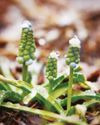
Backyard Tornado
\"HE WHO SEARCHES FOR SPRING WITH HIS KNEES IN THE MUD FINDS IT, IN ABUNDANCE.\" - ALDO LEOPOLD
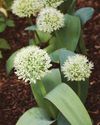
Front-of-the-Border "Wow!" Power
When it comes to easy-care plants that bring a lot of punch to the border, 'Ivory Queen' Turkestan onion should be near the top of your shopping list.
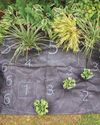
GARDEN ESSENTIALS
MAKE GARDENING EASIER THIS YEAR

Elevate an Evergreen Hedge
Although an evergreen hedge looks suitable all year on its own, it's perfectly poised to become something even greater: a backdrop to a garden where flower after flower will unfurl with such drama, you just might find yourself stepping outside and offering your applause.

One Garden, Two Worlds
In this colorful and welcoming garden, sunny, flower-filled front borders transition to a shady backyard hideaway.
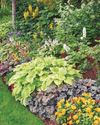
on edge
Four garden pros share their go-to edging techniques.

DIANTHUS
Add fragrance, vivid color and timeless charm with this reliable, cold-hardy perennial.

2025's Best New Plants!
Are you ready to start planning for next year's garden? A few new plants might be just what you need to bring those dreams to reality.
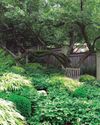
Solve Garden Problems With Ground Covers
Are you tired of coaxing turfgrass to grow in difficult spots? In her book Groundcover Revolution, Kathy Jentz says that ground covers can be the solution to these struggles.

The Romance of Spring
With the arrival of spring, emerging perennials fill the garden with soft texture, restoring life to the harsh, often barren landscape of winter.